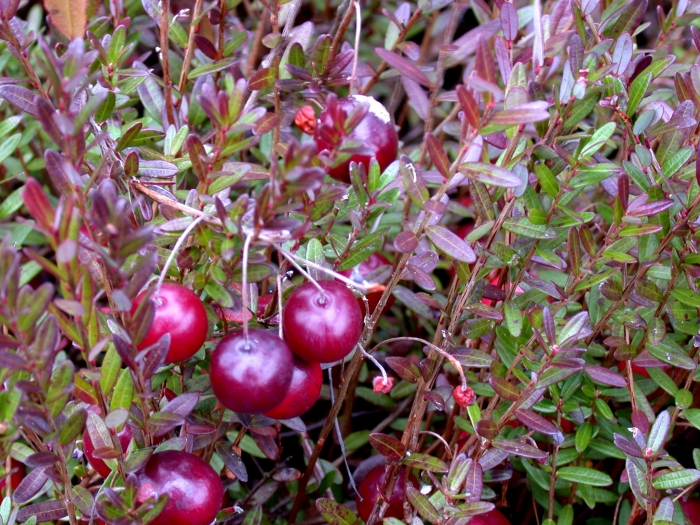Large Cranberry
(Vaccinium macrocarpon)
Large Cranberry (Vaccinium macrocarpon)
/
/

Ayotte, Gilles, 1948-
CC BY-SA 4.0













































































Estimated Native Range
Summary
Large Cranberry is valued for its edible fruit, which is harvested commercially and used in a variety of culinary applications. It is also grown ornamentally in garden beds and containers for its attractive foliage and fruit. The plant requires an acidic soil pH between 4.0 and 5.5, consistent moisture, and full sun to part shade. It can be propagated by cuttings or layering. In the landscape, it serves as an excellent ground cover and is sometimes used in wetland restoration projects. While generally low-maintenance, it can be susceptible to pests such as cranberry fruitworm and diseases like cottonball, a type of fungus.CC BY-SA 4.0
Plant Description
- Plant Type: Subshrub, Shrub
- Height: 0.8-1 feet
- Width: 3-4 feet
- Growth Rate: Moderate
- Flower Color: Pink, White
- Flowering Season: Spring, Summer
- Leaf Retention: Evergreen
Growth Requirements
- Sun: Full Sun
- Water: Medium
- Drainage: Slow, Medium
Common Uses
Bee Garden, Bird Garden, Butterfly Garden, Edible*Disclaimer: Easyscape's listed plant edibility is for informational use. Always verify the safety and proper identification of any plant before consumption., Groundcover, Hummingbird Garden, Low Maintenance, Rock Garden, Street Planting
Natural Habitat
native to acidic peat bogs, wetlands, and other moist areas in the Northeastern United States and Canada
Other Names
Common Names: American Cranberry, Großfrüchtige Moosbeere, Kranbeere, Große Moosbeere, Arándano Americano, Arándano Trepador, Canneberge À Gros Fruits, Ronce D’Amérique, Airelle À Gros Fruits, Graines
Scientific Names: , Vaccinium macrocarpum, Oxycoccus macrocarpus, Oxycoccus palustris, Oxycoccus macrocarpos, Schollera macrocarpos, Vaccinium macrocarpon f. eburnea, Vaccinium macrocarpon var. intermedium, Oxycoccos macrocarpos, Oxycoca berberidacea
GBIF Accepted Name: Vaccinium macrocarpum Aiton